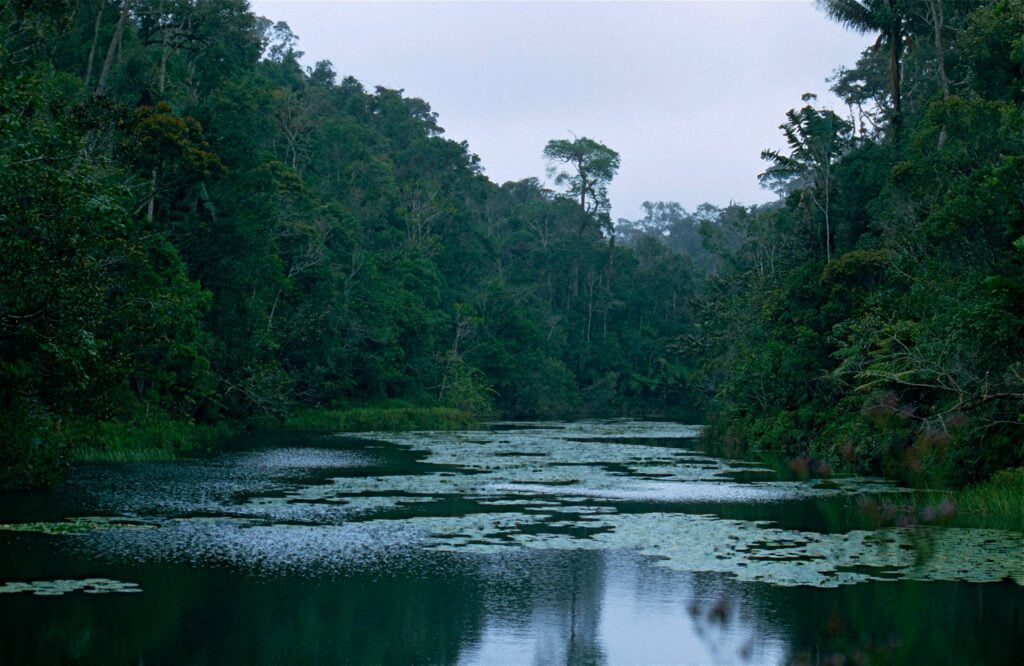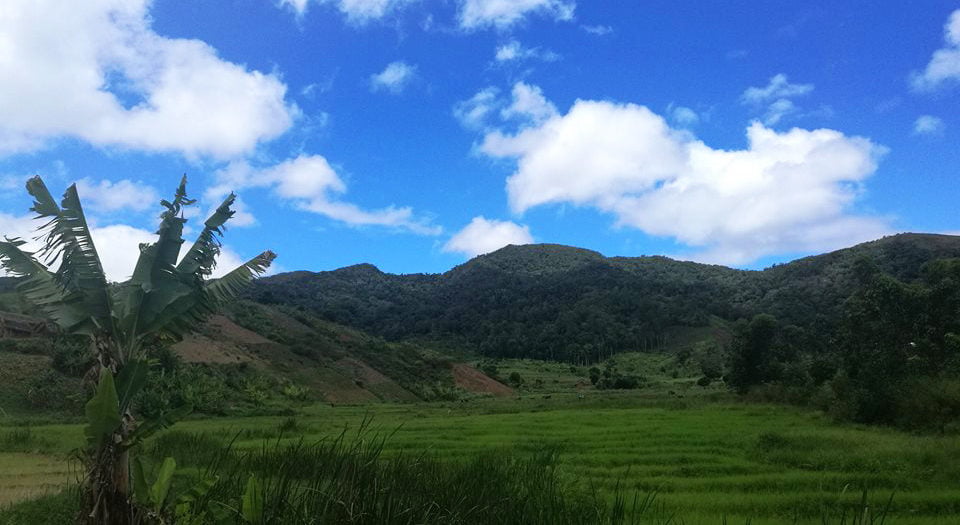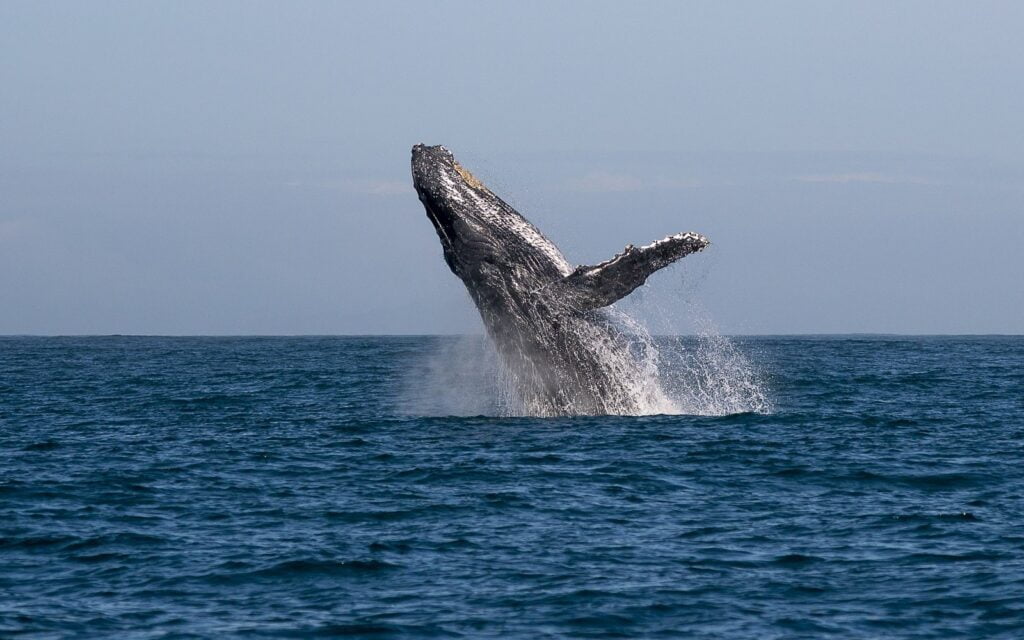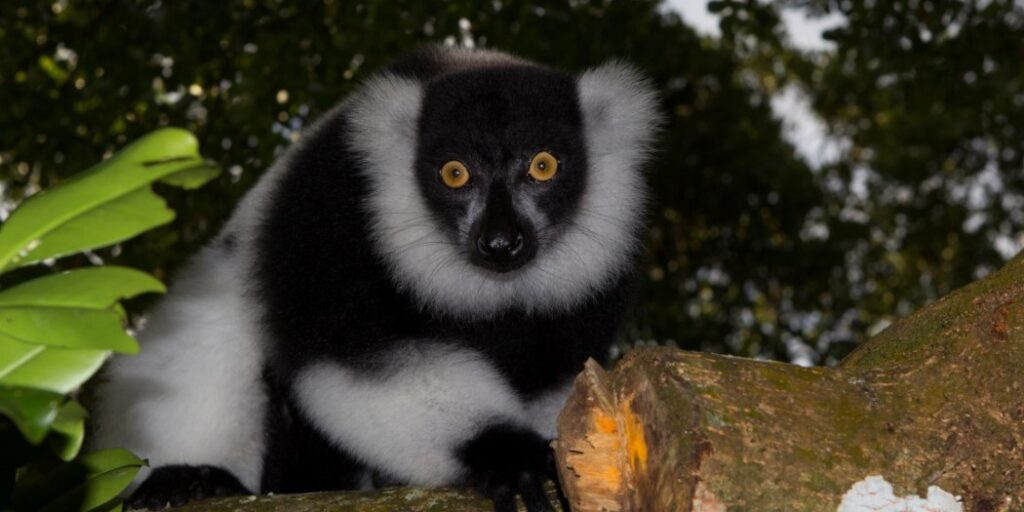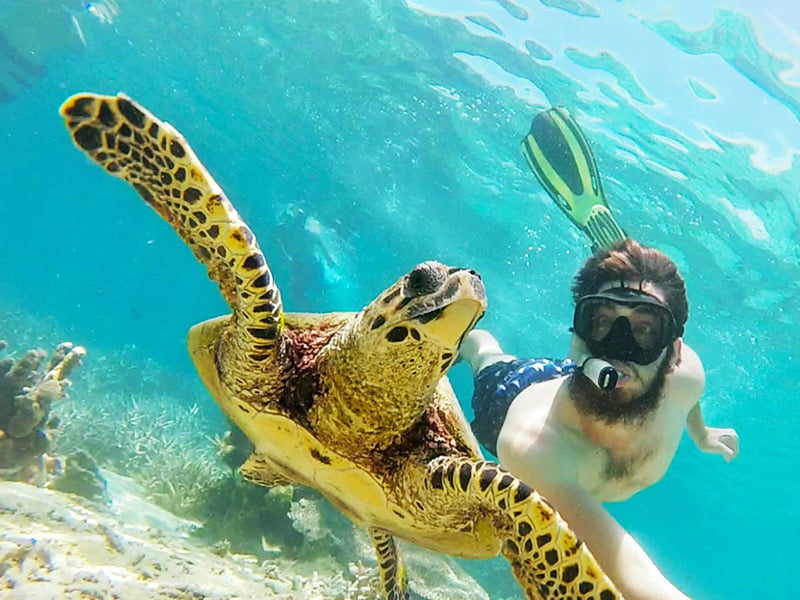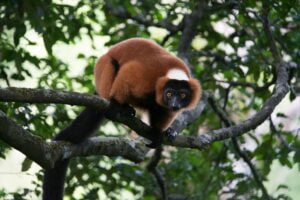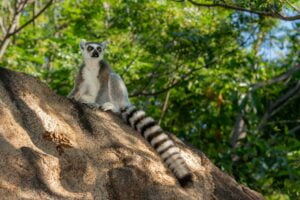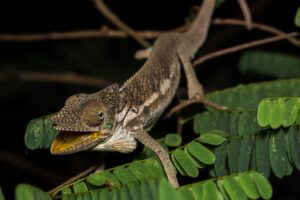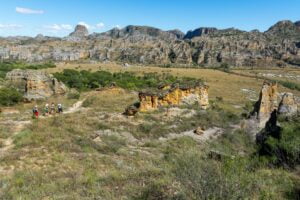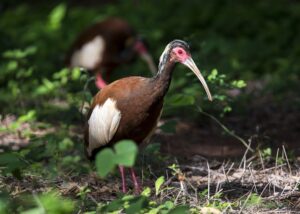
- Madagascar travel
- Sainte Marie & East
Sainte Marie & East
Analamazaotra National Park
The Analamazaotra Special Reserve, commonly known as Andasibe or Périnet, is a premier destination east of Madagascar for lemur observation. Easily accessible, it’s renowned as one of the world’s top primate-watching sites. Home to the iconic Indri, the park’s unique howling is a must-hear, especially at dawn. Overnight stays are recommended for the best chance to see the Indri, the largest living lemurs. Designated a UNESCO World Heritage Site since 2007, Andasibe-Mantadia protects a significant Indri population, with over 60 families. Guided tours through the 810-hectare mid-altitude rainforest offer encounters with lemurs such as Goodman’s mouse lemur, Crossley’s dwarf lemur, weasel sportive lemur, brown lemur, gray bamboo lemur, and eastern woolly lemur.
Sifakas and ruffed lemurs are also present, with the latter being more elusive. The reserve, situated at 900–1,250 m, adjoins Mantadia National Park and other vital forests like Maromizaha. Besides lemurs, visitors might spot the red-bellied lemur, aye-aye, and the rare hairy-eared dwarf lemur. The area also hosts endangered black and white ruffed lemurs, rare orchids, large spiders, and captivating chameleons. Exploring on foot, visitors can choose from various trail circuits suited to different physical conditions and interests, ranging from one to five hours.
Mantadia National Park
First-time Madagascar visitors should spend at least two nights in Andasibe, east of Madagascar, to explore Mantadia National Park. Known for its iconic Indri lemurs, Mantadia offers unique calls that wake guests within a 3 km radius. Andasibe is perfect for observing the endangered Indris, accustomed to humans. The park is home to 14 lemur species, including Diademes sifakas and black-and-white ruffed lemurs. Birdwatching in September and October is exceptional, with over 100 bird species, including endemics like the Madagascar green sunbird and serpent-eagle.
Mantadia boasts rich biodiversity, including 15 mammal species, 50 reptiles, and over 80 amphibians. Notable sightings include Madagascar’s heaviest chameleon, Calumma parsonii. Night walks reveal a world record number of frog species, and endemic fish inhabit local rivers. The park’s protected rainforest features hilly terrain and established trails, offering an ecotouristic experience. For plant enthusiasts, Andasibe showcases dense, humid vegetation with over a hundred orchid species. Exploring Mantadia involves trekking through a wilder forest with older trees and various trails, such as the Sacred Waterfall Circuit and Rianasoa Circuit, providing unique opportunities to encounter lemurs, orchids, and cultural sites.
Ranomafana National Park.
Ranomafana National Park in Madagascar, located east of Madagascar, is renowned for its hot springs. Covering 435 km² of mountainous terrain with altitudes from 500 to 1200 m, it was discovered in 1986 and designated as a National Park for its rare golden bamboo lemur, a protected species. The dense rainforest, influenced by moist air from the Indian Ocean, is home to over 1025 plant species, fostering a rich biodiversity. Small streams flow into the Namorona River, which powers a hydroelectric station.
Ranomafana is a wildlife haven, hosting 12 lemur species, 118 bird species, and various reptiles, amphibians, and insects. Established in 1991 and a UNESCO World Heritage Site since 2007, the park offers guided tours and opportunities for observing the golden bamboo lemur, Aye-Aye, and numerous chameleons. The Centre ValBio research base, founded by primatologist Patricia Wright, provides insights into this unique ecosystem.
The park features giant tree ferns, bamboo, orchids, and medicinal plants, with invasive strawberry guava attracting lemurs. For travel and tourism, Ranomafana is a top tour company recommendation and a must-visit destination in Sainte-Marie.
Zahamena National Park.
Zahamena National Park, located on Madagascar’s eastern coast within a tropical rainforest, features a diverse terrain of hills and lush vegetation. Situated 70km northwest of Tamatave and 25km east of Lake Alaotra, it ranks among Africa’s top three largest tropical rainforests. Divided into two areas, the park remains relatively unknown, with ongoing surveys enhancing scientific understanding of its rich biodiversity.
Home to 45 mammal species, including 13 lemurs like the indri and aye-aye, Zahamena also supports predators such as the fossa and mongoose. It hosts 112 bird species, 67 of which are endemic to Madagascar. Additionally, the park features 29 fish species, 62 amphibians, and 46 reptiles, including the Madagascar big-eyed gecko.
The hilly landscape is characterized by steep-sided valleys and rivers flowing into Lake Alaotra. The flora includes over 60 orchid species, 20 palms, and 500 woody plants. Access to the park is challenging; while Ambatondrazaka offers basic hotels, camping is recommended for a more immersive experience. Trekking tours include routes to spot lemurs, birds, and a natural pool with a view of Alaotra Lake, plus a trek to an 80m high waterfall. Combining circuits allows for extended exploration of Zahamena’s treasures. This least-visited park offers a genuine encounter with Madagascar’s wildlife, making it a top choice for nature enthusiasts. Zahamena is a unique destination, showcasing the true wonders of Madagascar‘s biome and ecosystem.
Sainte Marie Island and whale watching
Whether called Sainte Marie, Nosy Boraha, or Ile Ste Marie, this unique island off Madagascar’s eastern coast is a top destination for tourism. Often known as the « Garden Island, » it boasts rich biodiversity, majestic waterfalls, natural pools, and vibrant coral reefs, making it one of Madagascar’s most popular tourist spots. Measuring 57 km long and 8 km wide, Ile Ste Marie features lush vegetation, sandy beaches, and charming villages. From luxury hotels to budget accommodations, the island caters to all. Activities include cycling, traditional pirogue rides, and walking tours.
With a history steeped in 17th and 18th-century pirate lore, Sainte Marie now draws visitors with its diverse attractions. Top tours on Ile Ste Marie include humpback whale watching, sun-soaked beaches, pedestrian walks, the pirate cemetery, coral reef diving, and deep-sea fishing. The island’s wildlife and relaxed atmosphere reflect a traditional way of life. Enjoy Malagasy music, coconut chicken, seafood like lobster, shrimp, and crab, and local specialties such as zebu meat, rice, and spicy flavors.
Ankanin’ny Nofy (Palmarium reserve) on the Canal des Pangalanes
Akanin’ny Nofy, also known as Palmarium, is a tranquil paradise located on a 35-hectare peninsula along Lake Ampitabe, part of the Canal des Pangalanes in the east of Madagascar. This reserve, often called the ‘nest of dreams,’ features white sand beaches, lush forests, and mangroves. Home to nearly 100,000 palm trees unique to Madagascar, it boasts native plants such as the Ravenala (Traveler’s Palm), vanilla, pineapple, and radiata tortoises.
Akanin’ny Nofy is famous for its tame lemurs, including Indris, black and white ruffed lemurs, crowned lemurs, and the rare Aye-Aye. Visitors can enjoy guided nocturnal tours to see small mouse lemurs and woolly lemurs. The reserve also hosts various reptiles, amphibians, and crocodiles, as well as carnivorous pitcher plants and vibrant orchids.
Within the reserve, there are bungalows, a restaurant, and a bar set amid a botanical garden. Additional luxurious bungalows with king-size beds and a lake-view restaurant are a few kilometers away. Guests can enjoy Malagasy cuisine, relax on the beach or boat stage, and explore the diverse flora and fauna on guided tours through the lowland rainforest. The reserve’s flat paths lead to a viewpoint offering stunning vistas of the crocodile lake and Lake Ampitabe. A reforestation project, started in 2015, is restoring a cleared corridor with native plants from a nearby NGO tree nursery.
The Idyllic Ile aux Nattes
Île aux Nattes, also known as Nosy Nato, is a pristine tropical paradise located south of Sainte Marie Island, on the east of Madagascar. With its fine white sand beaches, lush landscapes, and turquoise waters, it’s an ideal spot for relaxation and various sea-related activities, including scuba diving. The island features a coral reef with exotic marine life, offering a colorful underwater experience. The warm and inviting turquoise sea is perfect for swimming and snorkeling. In August, you can witness humpback whales and their calves from your bungalow. Enjoy warm and comfortable weather year-round in this peaceful setting.
Nosy Nato is free from cars or motorcycles, featuring only soft sand, crystal-clear water, and the option to travel by pirogue. Explore the island’s southern tip with a small lighthouse offering panoramic views of the coral reef and exceptional diving sites. Enjoy walks along stunning beaches, swim, or have a beach picnic. Fresh seafood barbecues can be organized, and the island is home to unique wildlife like black and white lemurs and rare orchids, such as the Queen of Madagascar. In summary, Île aux Nattes is a tropical paradise with white beaches, overhanging palms, a turquoise sea, and a lush green interior – a true escape to paradise for tourists and travelers.


